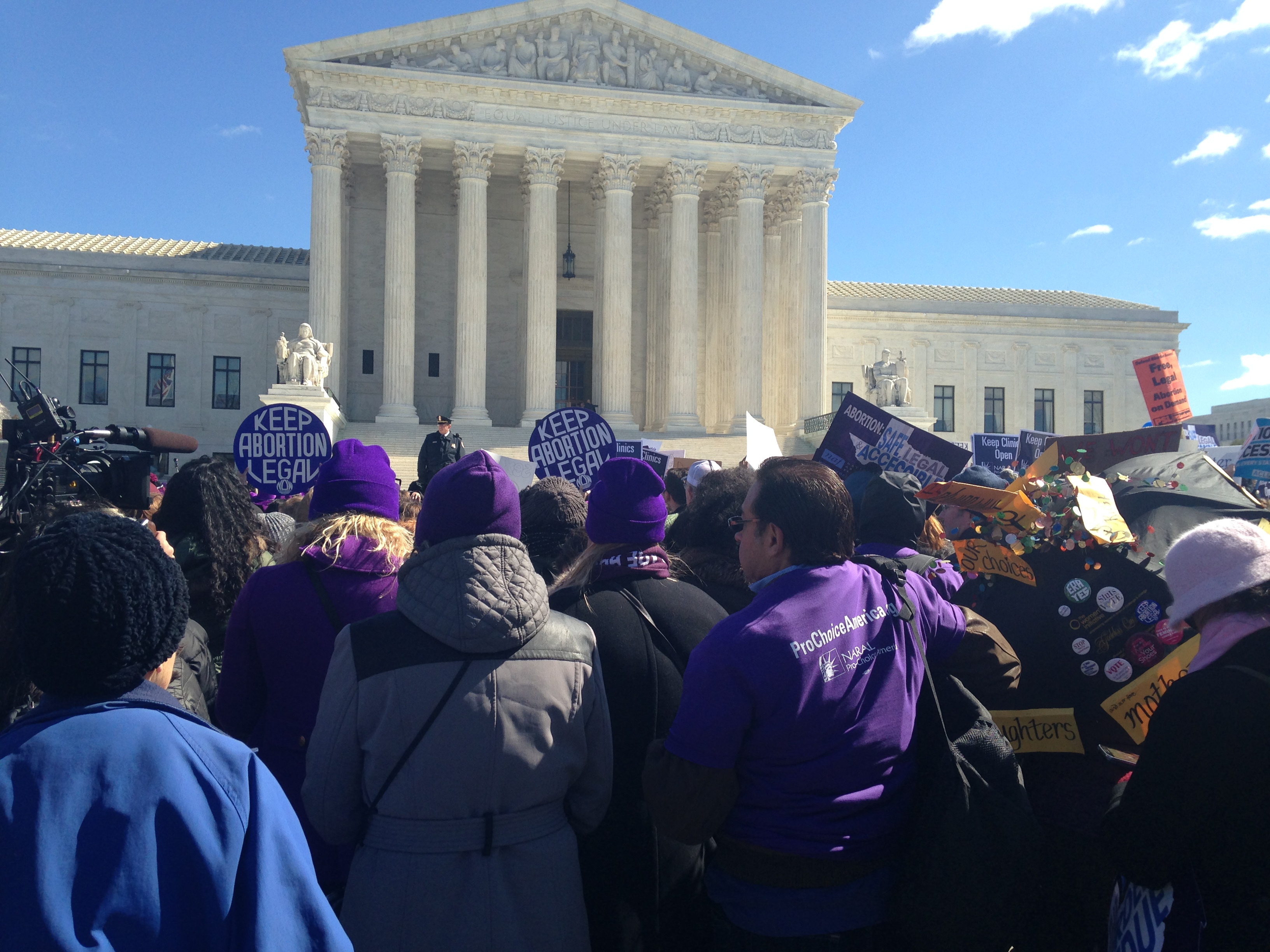Today I went to the Supreme Court to cover oral arguments in Whole Woman’s Health v. Hellerstedt, a case that could dramatically impact abortion access in the United States. The landmark case centers on HB2, a Texas law passed in 2013 that, among other things, requires abortion providers to get hospital admitting privileges and to meet the physical requirements of ambulatory surgical centers.
Pro-choice advocates call HB2 and other laws like it "targeted regulations of abortion providers," or TRAP laws. TRAP laws, they say, are specifically designed to drive providers out of business rather than to increase patient safety.
Whole Woman’s Health v. Hellerstedt has the potential to either halt the spread of TRAP laws around the country or uphold a Texas law that resulted in the closure of the majority of abortion clinics in the state.
Generally speaking, oral arguments aren’t as important as the briefs and documents both sides file, but they give Justices the opportunity to question the attorneys representing both sides. Also, legal analysts like to predict the outcome of a case based on the questions the Justices ask. The recent death of Justice Antonin Scalia, a staunch conservative, has changed the potential outcomes of the case.
The energy among the press in the courtroom was high, as many, like me, were attending their first Supreme Court hearing.
On the whole, the arguments allowed Justices Sotomayor, Ginsburg, Kagan and Beyer to show their unsurprising opposition to the law, and to reiterate questions about the medical necessity of the regulations and the impact of the law on abortion access. At one point, Sotomayor pointed out that patients are 28 times more likely to have complications from a colonoscopy than they are from an abortion. Doctors who perform colonoscopies are not subject to HB2 regulations.
Justice Alito, who appeared to support the law, was the most vocal in his questioning. At one point he challenged whether plaintiffs really could correlate the Texas abortion clinic closures with HB2. Apparently Justice Thomas was back to his decade-long practice of silence. He didn’t ask any questions.
Justice Kennedy, who is considered to be the court’s most important swing vote, was fully engaged, asking a number of questions throughout the hearing. Lyle Denniston of SCOTUSblog, suggests that Kennedy may have been fishing for a middle-of-the-road option like sending the case back to the lower courts for more evidence rather than agreeing with liberal colleagues.
You can read the full transcript of the hearing here.
While the hearing took place inside of a mostly hushed courtroom, hundreds of activists rallied outside on the steps of the Supreme Court. Abortion advocates definitely outnumbered the pro-life supporters, and people had traveled from all over the country to be part of the demonstration, including many people of color in support of abortion rights.
The pro-lifers, a much Whiter group, were corralled off in a smaller section in the middle of the crowd. They were quieter than their pro-choice counterparts. At one point during the hearing, Congressman Paul Ryan came to address the group. Their signs read "Protect Women, Protect Life," "Stop Abortion Now," and "Life Counts."
{{image:2}}
Elizabeth Hira came from New York City to be part of the rally in support of abortion access. "It’s important to be here because it’s historic," she told me. "I’m a lawyer and I’m tired of having this conversation." "Stop the Sham" was featured prominently in tweets and messages across the rally.
{{image:3}}
Renee Bracey Sherman, a writer and activist who has openly shared her own abortion story, passed out signs to pro-choicers as they arrived. Sherman had one sign for people who had personal experiences: "I had an abortion." The other sign, for people who hadn’t had the procedure, said, "Protect abortion access." At one point she lead the crowd in a familiar chant: "Hey, hey, ho, ho, HB2 has got to go."
Pro-choice men were also in attendance, including Allan Sakaue from California. "I’m here because I believe in a woman’s right to choose. I have two sisters and I wouldn’t want anyone dictating their right to choose," he told me.
While controversial decisions like this one are usually announced in June, it’s possible that the court will issue on on this case much sooner—if the evenly split court ties, or it decides to send the case back to the lower court for further evidence. From SCOTUSblog:
The Justices will cast at least a preliminary vote on the case when they assemble on Friday morning for a private Conference. If the case is going to be sent back to lower courts, or if the Court essentially gives up and casts a four-to-four vote, those outcomes might be announced quite soon, perhaps as early as next Monday. There is, of course, the possibility that more discussion would be necessary to sort out where the Court wants to go.
